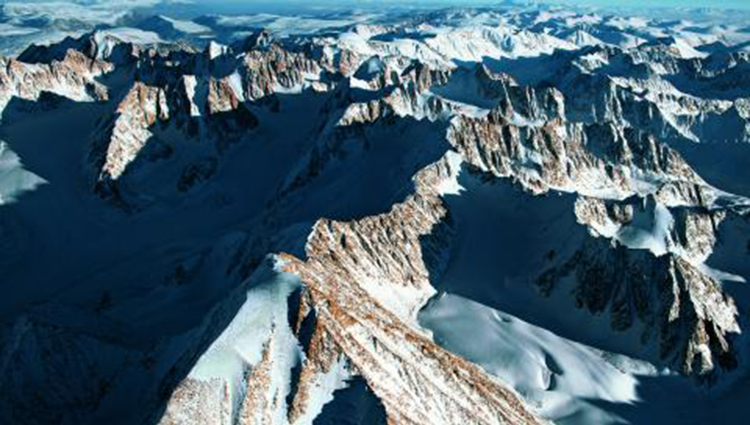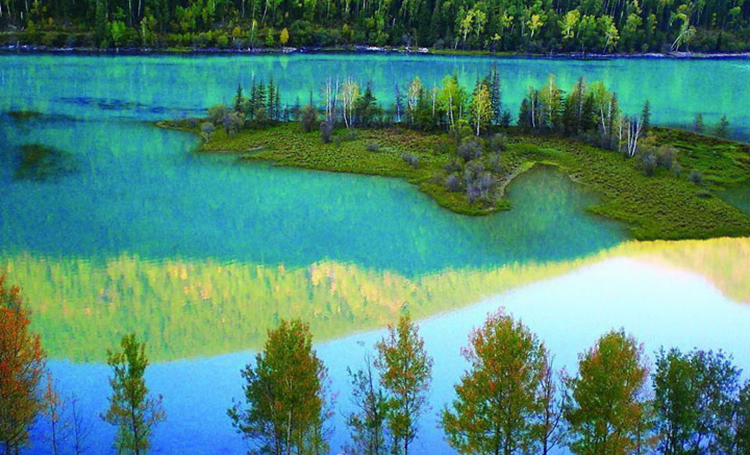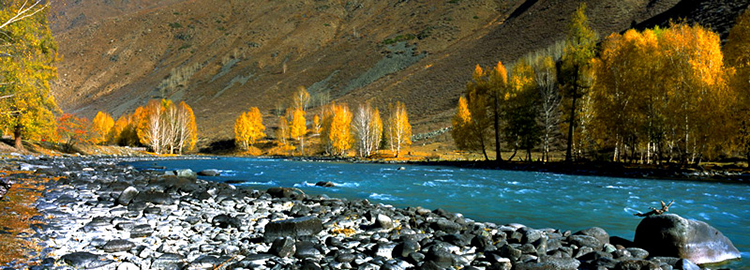Written by: Xiang Jing
Posted on: March 03, 2016 | 
Kanas Lake
Overlapping mountains and peaks encircle Kanas Lake. The landscape of the lake and mountains is beautiful. Looking through the dense forests on the bank of the lake, one can see mist and clouds winding around the green mountains and snow peaks reflected in the green lake water. At times red deer can be found coming from the forest. Surrounding the lake are dense pines, firs, birches and willows, as well as brush taller than a man. Every now and then, deer and roe deer can be seen in the brush. Groups of wild ducks play on the lake surface. Big fish sometimes jump out of the lake, sending ripples across the surface. The scene of the lake has characteristics of both the southern and northern lakes in mountains. The Friendship Peak, with white snow, looks like glittering white jade, rising up to the top. The glaciers around it look like dancing jade dragons. The longest one is the Kanas Glacier, which is more than 10 km long. Thawed water from the glacier, running across the Akekule Lake in a fork-shape, is the major water source supplying the Kanas Lake.
The Kanas Lake is in the middle section of the Kanas River, a branch in the upper reaches of the Vurjin River. During the summer, the flow rate at the mouth of the lake is about 50 cubic meters per second. The depth of the lake varies less than 30 cm in a year. The water volume is comparatively stable and the slope of the bank is gentle. The plants beside the lake grow densely and the whole lake region is an ideal place for fish and waterfowl to lay eggs and breed. In July and August, small fish gather near the bank like clouds and change the color of the water. What’s even more interesting is that the color of the Kanas Lake changes according to the weather and the time of day. When seen from the mountain tops, it is deep blue and green on sunny days and dark celadon on cloudy days. During hot days in the summer, the lake water changes to milky white with a hint of cyan, as the glaciers on the upper reaches thaw quickly and a large amount of milky white icy slush flows into the lake. Sometimes the water shows a variety of colors. The lake is famous for its ‘color-changing’ quality.

The Kanas Lake water experiences great changes in temperature. In the middle of July, at noon, the water temperature can reach above 20?, suitable for swimming, while at nightfall the temperature decreases quickly and is ice-cold. In December, the surface freezes over. The Kanas Lake looks like a white crystal mirror, and local Mongolian herdsmen make use of sledges to transport materials across its surface. The lake does not thaw completely until May. Due to waftage by the strong valley wind on the surface, the trees on the upper reaches and those falling down to the lake are blown to the northern end of the lake and form a strip of withered, rotten floating wood, over a hundred meters wide and 2 km long. It is a great wonder of the Kanas Lake. In July and August, it is encircled by mist and clouds, and the mountains are only partially visible. When climbing up to the top of Halaket Mountain west of the lake, in the morning after rain, people can appreciate a sea of clouds and the Buddhist halo.
The Kanas Lake was formed during the second grand ice age from peeled glaciers of huge compound valleys. At that time, the Kanas Glacier was more than 100 km long and over 300 meters deep. Due to slow and stable shrinking, a moraine ridge about 1 km wide and 50 to 70 meters high was left at the mouth of Kanas Lake. Later, due to quick shrinking, the foundation for the present Lake was formed. The ancient glaciers are considerably intact. Today, in addition to the abrupt cliff on the eastern bank of the lake on the Roche Moutonnee, there is a large area covered with fork-shaped scrapes made by the glaciers. It is interesting that on the Roche Moutonnee there is an ancient rock painting, which adds a historical and human touch to Kanas. That moraine ridge serves as a good place to hold Akeng singing, concerts and horse racing.
The annual rainfall is 700-800 mm. Due to greatly varying mountains heights, there are distinct vertical scenic zones. On the bank of the lake, people can appreciate seven scenic zones of the Altai Mountain with sharp-cut layers and various colors. The zones include, from top to bottom, black calcrete meadow and grassland zone, mountainous gray-black earth and coniferous and broadleaf forest zone, mountainous bleached gray earth and coniferous forest zone, sub-alpine meadow zone, alpine meadow zone, ice swamp zone and permanent ice and snow zone. From the foot to the top of the mountains, there are several natural scenes from temperate grassland to tundra, which create conditions for various animals and plants to live.

This is the only region in China containing animals and plants of the southern Siberian region. There are nearly 1,000 varieties of plants, over 30 kinds of animals, more than 100 kinds of birds, 7 kinds of amphibian reptiles, 8 kinds of fish, and over 300 kinds of insects. Different plant groups are distinguished from each with their various colors. The 25 kinds of plants mainly include the tall and straight Siberian larch, pagoda-shaped Siberian spruce, vigorous Siberian red pine, and beautiful Siberian fir which compose the primitive dark coniferous forest zone all over the mountains near the banks of the lake. It is the only European-Siberian ‘enclave’ of boreal forest. In the forests there are layers of withered and rotten trees. On these trees and on the withered branches and leaves on the ground, grow moss, wintergreen, bilberry, rosebush and honeysuckle 2 to 3 meters in height. They fill the space under the crowns of arbors 20 to 30 meters high, which are hung with trailing plants, making the forest especially dark.
The forest beside the lake shows a different scene: there are red peony, and red flowers everywhere, a golden piece of canary-creeper, tulip, water-buttercup, a blue-carpet-like piece of delphinium, fleur-de-lis, myositis (forget-me-not), and umbrella-shaped flowers of wild carrots which are tall enough to block the wind and look like white clouds in the sky. Due to changes in seasons and the ecological environment, they form various colorful parterres and compose an extraordinarily beautiful picture with a blue sky, white clouds, snow peaks, green water and dark green forest as one integrated mass.
Kanas Lake is a paradise for wild animals. It is the region containing the most kinds of animals and birds in the Xinjiang Uygur Autonomous Region. In the dense virgin forest and the flowers and meadows all over the mountains, there live numerous rare animals, which are protected by the state. Groups of cold-water fish such as Hucho taimen (big red fish), red-scale trout (small red fish), North Pole fish and codfish swim in the lake. The biggest red fish can be 4 meters long, is quite heavy, and can swallow a wild duck in one gulp. A natural scenic protected region covering an area of 10,300 square km has been established with the Kanas Lake as the core. Strange, peculiar, unique and beautiful natural scenes and strong and unique human scenes compose the great and mysterious characteristics of the protected region and make it valuable for scientific investigation, tourism and cultural research.

With the change of seasons, the Kanas Lake displays different forms of beauty. In the middle of June, the green grass is lush and knee-high. Flowers are brilliant on the mountains, and huge wild red peonies and orange canary-creepers exude their fragrance all over the mountains. It is like a hundred-flower garden. In the forest, birds sing sweetly and butterflies dance. It is a green and lush world.
Autumn is the most beautiful season in Kanas. Like a magician, it interweaves the golden-silver birches and conifer trees, brightly red wild calyx canthus and green spruces in a colorful palette. The dark green and clear lake water reflects the blue sky, white clouds, flying eagles, mountains, peaks and forests. It is an intoxicating sight. Many literati and scholars composed poems to express their admiration. Yelu Chucai, a politician and poet of the Yuan Dynasty (1206-1368), wrote a poem to praise the scene: “Who knows there is a beautiful scene in the Western Region, and I began to believe the outstanding emotion of the eastern monarch. There are three hundred different ponds, and the lake is full of clear spring water."
You may also like: